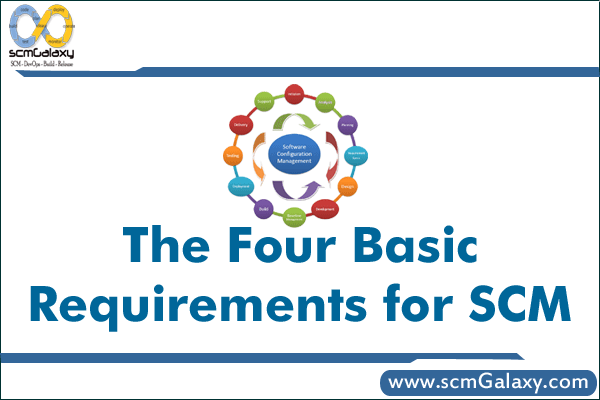

Identification, control, audit, and status accounting are the four basic requirements for a software configuration management system. These requirements must be satisfied regardless of the amount of automation within the SCM process. All four may be satisfied by an SCM tool, a tool set, or a combination of automated and manual procedures.
- Identification—Each software part is labeled so that it can be identified. Furthermore, there will be different versions of the software parts as they evolve over time, so a version or revision number will be associated with the part. The key is to be able to identify any and all artifacts that compose a released configuration item. Think of this as a bill of materials for all the components in your automobile. When the manufacturer realizes that there has been a problem with parking brakes purchased from a subcontractor, it needs to know all the automobile models using that version of the parking brake. It is the same with software. If we are building a multimedia system that has audio MPEG3 drivers for Windows 98, Windows 2000, Windows CE, Linux, and FreeBSD operating systems, how do we find out which releases are impacted when we find an error in the Linux product? You must go back to your SCM system to identify all the common components in all operating system releases that are impacted.
- Control—In the context of configuration management, “control” means that proposed changes to a CI are reviewed and, if approved, incorporated into the software configuration. The goal is to make informed decisions and to acknowledge the repercussions associated with a change to the system. These changes may impact budgets, schedules, and associated changes to other components. If a problem is reported in a released product, software engineers must act quickly to evaluate repercussions—a “fix” for one client’s version of the product may be dangerous to another. The control inherent in an SCM system shows each version in which the flawed component appears.
- Auditing—Auditing an SCM system means that approved requested changes have indeed been implemented. The audits allow managers to determine whether software evolution is proceeding both logically and in conformance with requirements for the software. The SCM system should document changes, versions, and release information for all components of each configuration item. When such documentation is in place, auditing becomes a straightforward analysis task.
- Status accounting—Reports and documentation produced by the status accounting function are the auditable entries. All approved parts of a software configuration must be accounted for, and the software parts list must reflect the transition from part CIn to CIn+1. This accounting provides the historic information to determine both what happened and when on the software project. Status accounting enables the auditing requirement of the SCM. As a project manager, the status accounting holds a wealth of information on the amount of effort required throughout the life cycle of the product in its development and maintenance. This is critical to the software project manager in making estimates for new systems based on historic information. The SCM can be used as one of the key components of the project managers’ metrics system.
I’m a DevOps/SRE/DevSecOps/Cloud Expert passionate about sharing knowledge and experiences. I am working at Cotocus. I blog tech insights at DevOps School, travel stories at Holiday Landmark, stock market tips at Stocks Mantra, health and fitness guidance at My Medic Plus, product reviews at I reviewed , and SEO strategies at Wizbrand.
Please find my social handles as below;
Rajesh Kumar Personal Website
Rajesh Kumar at YOUTUBE
Rajesh Kumar at INSTAGRAM
Rajesh Kumar at X
Rajesh Kumar at FACEBOOK
Rajesh Kumar at LINKEDIN
Rajesh Kumar at PINTEREST
Rajesh Kumar at QUORA
Rajesh Kumar at WIZBRAND

 Starting: 1st of Every Month
Starting: 1st of Every Month  +91 8409492687
+91 8409492687  Contact@DevOpsSchool.com
Contact@DevOpsSchool.com
